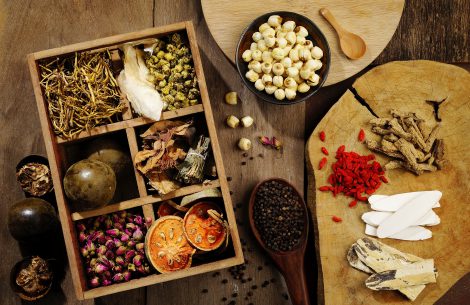Herbal medicine has enjoyed a boost in popularity in recent years. As more and more mainstream hospitals and medical centers embrace integrative medicine and its use of herbal medicines, word spreads and awareness grows. This is good and bad; and it’s the reason the mechanism of action of herbal medicine is so important.
It’s good for the immense benefits herbal medicines can provide without the side effects.
The bad has to do with a growing demand and the importance of quality. Poor quality products will not help a patient (which is most important), but they also won’t help promote the real value of herbal medicine either.
This is what makes mechanism of action so important for herbal medicine – and the health and well-being of patients too.
What is Mechanism of Action (MoA)?
The phrase “mechanism of action” in pharmacology refers to the way a substance causes its pharmacological effect. In herbal medicine, mechanism of action identifies the compounds that produce the effect and explains how they do it.
This is vital for many reasons:
- It establishes the herb as having pharmacological properties.
- The way it works identifies patients who may get the most benefit from it.
- Potential interactions with other drugs can be prevented.
- Proper dosing can be established to provide the best patient outcomes.
- Combinations with other herbs for enhanced effects through synergistic interactions becomes easier to identify and produce.
Each of these represents benefits for patients.
Benefits of Understanding MoA in Herbal Medicine
One big reason so many people – including doctors – have turned to herbal medicine is to reduce side effects. Treating one condition but creating others doesn’t improve quality of life. Herbal medicines resolve this problem by typically having minimal, if any, side effects.
Understanding MoA does more, however, than simply proving an herb offers pharmaceutical properties without side effects. It also means:
- Specific herbs or herbal formulations can be matched to a patient’s exact need.
- Herbs can be used in a way that maximizes safety.
- The potency of a given herbal medicine can be strictly measured.
- Herbal medicines can be made more affordable and available to a wider audience as cultivation, manufacture and supply are standardized.
Outcomes from tests and clinical trials will also become more repeatable and easier to confirm.
Previous Challenges of MoA in Herbal Medicine
One of the challenges facing herbal medicine has been consistency of product dose and its impact on clinical trials. For example, turmeric, especially its active compound curcumin, has known anti-inflammatory properties. Yet, results in trials have been mixed. In some, turmeric has produced incredible outcomes for patients; in others, the results were less stellar. Why?
The problem with turmeric is that curcumin breaks down quickly during digestion. On its own, only about 5% or so gets absorbed into the blood stream. Dosing then becomes a serious factor to success during a trial. A 400 mg dose of curcumin will produce (or not) one effect as compared to a 1 g dose.
Turmeric is only one example. This same issue goes for every herb. But bioavailability like this is only one example.
Area of cultivation can affect an herb’s potency. A well-managed field, with well-nourished soil will produce a good crop. Depleted or polluted soil will not.
Preparation is another factor. Some active compounds break down if not handled and prepared properly. A certain loss may be inevitable, but that only introduces the need to be able to measure potency to ensure consistent potency for each dose.
In the past, herbal medicine such as was practiced in Traditional Chinese Medicine was as much art as it was science and knowledge. The healers had to know exactly how to prepare the herbs for the best effect. Yet even so, the outcomes could not be verified except for the patient outcome, of which many factors could play a big part.
Today, science and technology offer a way to guarantee a consistent product with a consistent mechanism of action.
How to Science and Technology Overcome MoA Challenges
Innovative Chinese Medicine has added science and technology to the wisdom and knowledge of Traditional Chinese Herbal Medicine. Technology allows for an exact understanding of the MoA of any given herb to be identified, isolated and its potency protected. Science leverages the precision offered by technology to produce exacting, measurable tests. These combined with established global standards for quality and testing make it possible to create herbal medicines with predictable and consistent outcomes.
Applying technology to the pharmacological mechanism of action in herbal products also creates opportunities for new herbal combinations never before considered as we understand the pharmacopeia nature has to offer better than ever.
Better yet, it presents a new era of hope for doctors and patients!

